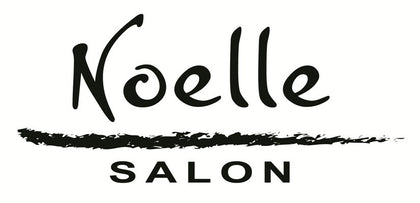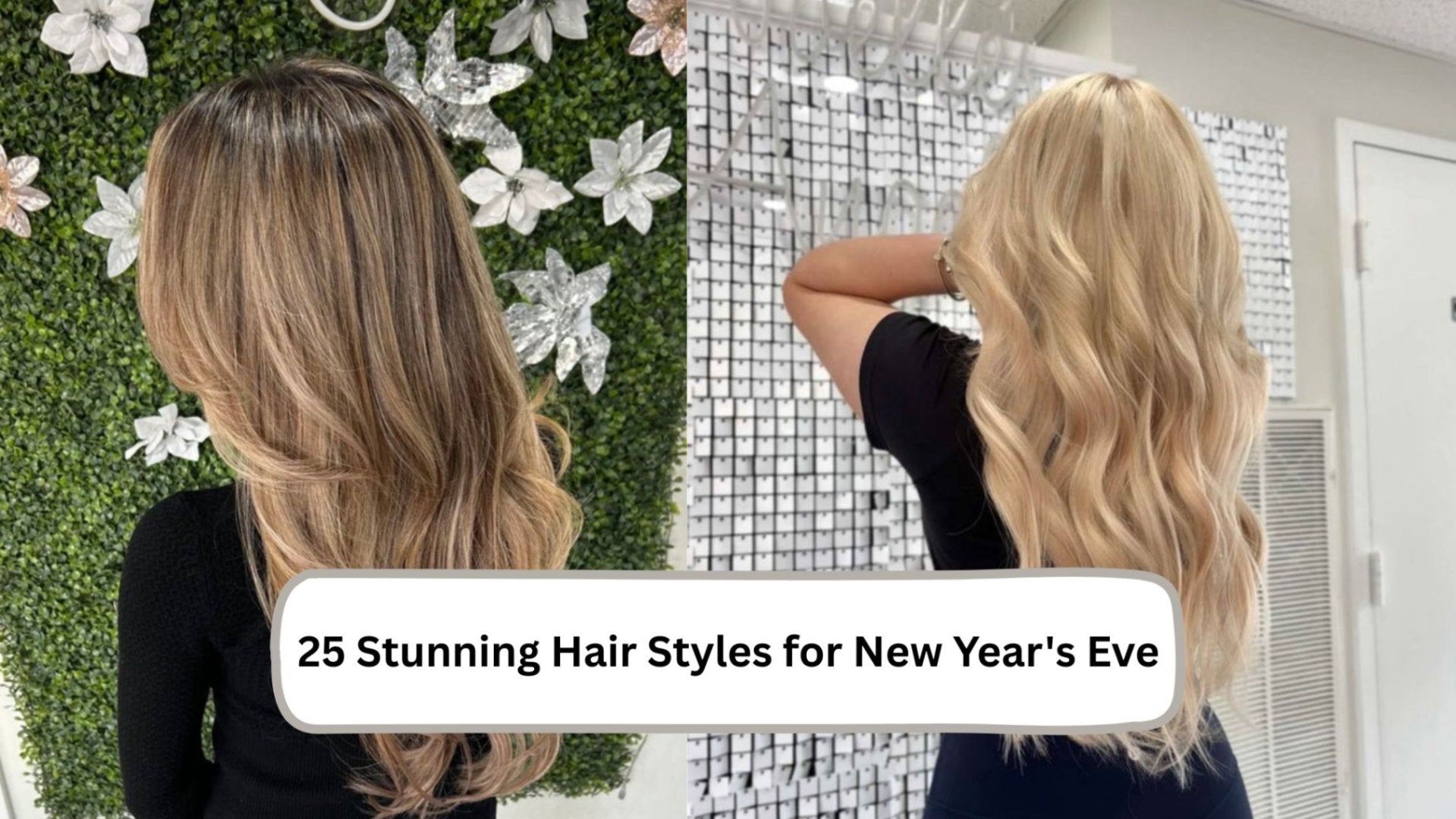How To Install Hair Extension Using Gel Instead Of Glue In 2025?
Key Highlights;
Here’s a quick look at what you'll learn about using gel for hair extensions:
-
Gel offers a temporary, gentle alternative to traditional glue, lasting 1-2 weeks.
-
The best results come from using salon-grade bonding gels on clean, dry hair strands.
-
Proper sectioning is key to ensuring the weft is secure and blends seamlessly.
-
Applying gel avoids the harsh chemicals and sticky residue common with glue.
-
Correct application prevents buildup, and a light hairspray can extend the style's life.
Have you ever wanted to add length or volume to your hair without the commitment or potential damage of glue? You're in luck! Using gel to install hair extensions is a fantastic, gentler alternative.
Styling hair with gel and extension can instantly transform your look, adding both volume and definition.
This method allows you to secure a weft or individual strands without harsh adhesives, which means no more worrying about sticky residue or scalp irritation.
It’s perfect for temporary styles like a high ponytail one day to a messy bun the next, giving you the freedom to change your look whenever you want. In this detailed blog, we will help you with just this problem, so keep reading to learn how to apply extensions with gel for a damage-free, stylish look!
What Should You Know About Hair Extensions and Gel-Based Installation?
Styling natural hair with gel and extension gives a sleek look while adding extra length and volume.
Unlike glue, this method doesn't rely on harsh chemical bonding. Instead, the gel creates a firm, yet flexible, hold that keeps the extensions in place temporarily.
It’s perfect if you want a quick weave or a short-term style change, and it keeps your hair free from mess and buildup.
If you’re exploring gentler, temporary ways to add volume or length, you may also want to check out our expert guide on types of hair extensions before diving into gel-based methods.
How Gel Differs from Traditional Glue for Extensions?
The main difference between gel and glue lies in their chemical composition and how they bond to hair.
|
Feature |
Gel |
Glue |
|---|---|---|
|
Composition |
Water-based or polymer-based |
Resin-based |
|
Bond Strength |
Flexible, moderate hold |
Strong, long-lasting hold |
|
Removal |
Easy, usually with gentle cleansers |
Requires solvents, more difficult |
|
Hair Impact |
Less damaging, scalp-friendly |
Can cause breakage or irritation if misused |
|
Application |
Allows repositioning, beginner-friendly |
Precise application, less forgiving |
|
Comfort |
Lightweight, suitable for sensitive scalps |
Heavier feel, may cause tension |
What Are The Types of Hair Extensions Best Suited for Gel Application?

Not all hair extensions respond the same way to gel. To get a flawless, long-lasting style without damage, start by choosing the right type of extensions:
-
Light Wefts – Opt for lightweight wefts that sit softly on your scalp, giving you a boost of volume without that weighed-down feeling.
-
Single Strands – Great for sneaky length or a fun pop of color; just a dab of gel and you’re good to go.
-
Quick Weaves – Made for short-term fun and easy style swaps, perfect for playful gel styling.
Tired of wefts slipping or looking obvious? Explore the different types of wefts there are and which ones work best for you.
How Do You Choose the Right Hair Gel for Extensions?
Selecting the right gel is the most important step for a secure, glue-free installation.
|
Gel Type |
Best For |
Key Benefit |
|---|---|---|
|
Strong Hold Styling Gel |
Long-lasting extensions |
Keeps strands in place without flaking |
|
Alcohol-Free Gel |
Sensitive scalps |
Prevents dryness and irritation |
|
Fiber-Enriched Gel |
Thick or coarse extensions |
Adds extra grip for secure attachment |
|
Lightweight/Styling Gel |
Short-term or subtle styles |
Easy to remove and doesn’t weigh hair down |
What Is the Step-by-Step Process to Install Hair Extensions Using Gel?
We will break down the process into four key stages: preparing your hair, sectioning it for a clean application, applying the gel to secure the weft, and blending the strands for a flawless finish. Let's get started!
Step 1: Preparing Your Natural Hair and Extensions
Proper preparation is the foundation of flawless extensions. Wash your hair with a gentle, sulfate-free shampoo, lightly condition without the roots, towel-dry, and apply a leave-in conditioner. Avoid oils or silicones and fully dry hair before applying gel to ensure a secure bond.
Step 2: Sectioning Hair for Seamless Application
Sectioning sets the stage for a natural finish. Use a rat-tail comb to create horizontal parts from the nape upward, clipping remaining hair out of the way. Consistent, neat sections allow even placement, hidden wefts, and a balanced look that blends effortlessly with natural hair.
Step 3: Applying Gel and Securing the Extensions
The gel creates the bond that keeps extensions in place. Apply a thin, even layer to the root edge of the weft, wait until tacky, press firmly, and hold for 30–60 seconds. Optional low heat helps the gel set for a durable attachment.
Step 4: Blending, Styling, and Perfecting the Look
Blending is what makes extensions look natural. Release the top section, comb hair gently to merge with the wefts, tame flyaways with serum, and style as desired. Finish with flexible-hold hairspray for long-lasting, polished hair that feels seamless and natural.
Learn more about hair extension glues in this detailed guide.
How Can You Achieve a Natural and Long-Lasting Finish with Gel-Styled Extensions?
The key to a natural-looking installation is a perfect blend between your hair and the extensions.
For an even sleeker blend, try these techniques:
-
Use a flat iron on a low heat setting to press your natural hair and the extension strands together.
-
Apply a small amount of anti-frizz serum to both your hair and the extensions to create a uniform texture.
-
Pay close attention to the ends, ensuring your natural hair and the extensions flow together without a noticeable line.
See our picks for the best hair extensions for natural hair for a flawless finish.
What Mistakes Should You Avoid When Styling Extensions with Gel?
Using gel for extensions is relatively easy, but a few common mistakes can ruin your results. To ensure your style looks great and lasts, avoid these mistakes:
-
Skipping Hair Prep: Always start with clean, dry hair to ensure the gel adheres properly.
-
Applying on Wet Hair: Hair must be 100% dry before installation; moisture weakens the bond.
-
Forgetting the Edges: Neglecting to secure the ends of the weft can cause it to lift and become visible.
-
Using Too Much Gel: Overapplying can weigh hair down, make it stiff, or leave residue.
-
Incorrect Placement: Placing wefts too close or too far from the part can create an unnatural look.
-
Ignoring Sectioning: Uneven or messy sections can result in bumps or uneven distribution.
-
Skipping Blending: Failing to blend your natural hair with the extensions will make the wefts noticeable.
-
Applying Heat Immediately: Using heat tools too soon can weaken the gel and disrupt adhesion.
By avoiding these common mistakes, your extensions will look seamless, natural, and last longer.
What Are the Best Maintenance and Care Tips for Gel-Styled Hair Extensions?
Keeping your extensions in top shape doesn’t have to be complicated. A few small habits can make them last much longer:
-
Proper maintenance keeps extensions looking fresh and helps them last.
-
Gel bonds are temporary, so handle them gently to avoid loosening too soon.
-
Prevent product buildup to maintain a healthy scalp and a clean style.
-
Simple changes in your daily routine, like how you wash or sleep, make a big difference.
-
Following smart care habits ensures less residue, longer wear time, and easier removal when needed.
Safe Removal and Aftercare for Your Hair and Scalp
Here’s a simple step-by-step guide to safe removal and aftercare:
-
Step into the shower and let warm water run over your hair.
-
Gently massage the areas where the wefts are attached.
-
Feel the gel soften and dissolve, allowing the extensions to slide out effortlessly.
-
Avoid pulling or tugging, as removal should feel natural and easy.
-
Wash with a clarifying shampoo to eliminate any leftover product buildup.
-
Follow with a deep conditioning treatment to restore moisture and nourish your hair and scalp.
ADD YOUTUBE VIDEO - https://www.youtube.com/watch?v=YlVp4n51fkM
Why Choose Noelle Salon for Your Hair Transformation?
At Noelle Salon, we’ve set the standard in the greater Boston area for over 35 years, specializing in hair extensions, coloring, straightening, and advanced hair loss solutions. We proudly feature our signature Veila Hair Extensions alongside top brands and multiple application methods, ensuring a custom fit for every client.
Whether you’re looking for same-day services, like expert cuts, vibrant coloring, or complete integration systems, or professional training and education for salons, we’ve got you covered. Explore our YouTube channel and podcast for insights into our craft.
Book a consultation to connect with a hair expert today.
Conclusion
In conclusion, using gel for hair extensions is a softer, easier alternative to glue that keeps your natural hair happy and healthy.
Once you know the difference between gel and glue, pick the right products, and follow a simple step-by-step routine, you’ll have gorgeous, natural-looking extensions that last.
With a little blending and the right aftercare, your style will stay fresh and flawless. Want to give gel-based extensions a try? Connect with our experts for a consultation and let’s get you started!
Frequently Asked Questions
Is it safe to use gel on both synthetic and human hair extensions?
Yes, you can use bonding gel on both synthetic and human hair extensions. The key is to use a high-quality, alcohol-free gel to prevent drying out the strands. Always start with a clean weft to avoid product buildup and ensure a strong bond without leaving residue.
How can I fix visible tracks when using gel-styled extensions?
If tracks show, release more of your natural hair to cover them. You can also apply a little gel to smooth and blend, or use a root cover-up spray. Both techniques hide wefts while keeping your style seamless and polished.
Which extension styles and gel types work best together?
Lightweight wefts and strand-by-strand extensions work best with salon-quality bonding gels for a secure, natural look. For sleek ponytails, buns, or edges, an edge-control gel is ideal. Choosing the right gel ensures hold without causing buildup or stiffness.
Are there any risks or side effects of using gel instead of glue for extensions?
Gel is generally safer than glue, with minimal risks. Overusing gel may cause temporary stiffness or residue, but it rinses out easily. As long as you use lightweight, alcohol-free gel, there’s no long-term damage to your extensions or hair.
How to install hair extension using gel instead of glue?
Part your hair neatly, apply gel to the section, and place the extension track. Press gently but firmly to secure, then style and blend with your natural hair. This method gives a sleek, comfortable hold without sticky glue residue.
Can you put gel in human hair extensions?
Yes, you can use gel on human hair extensions. To avoid buildup, choose lightweight, alcohol-free formulas designed for styling. Apply sparingly, focusing on edges or tracks, and wash regularly to maintain softness, shine, and the long life of extensions.






